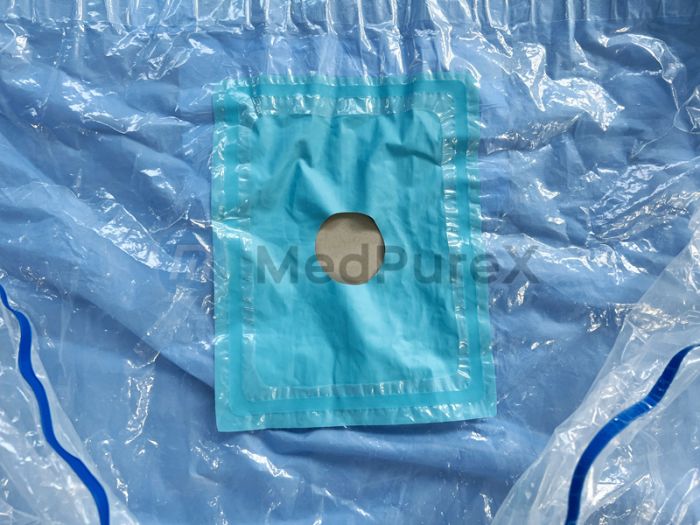Cesarean section (Integrated) package: Dual guarantees of material and heat sealing technology, safeguarding life
I. Introduction: The Life-and-Death Race Against Time and Efficiency
In obstetric emergencies, every second determines the survival of both mother and child. Traditional surgical instruments require repeated cleaning, disinfection, and sterilization—a cumbersome process prone to human error. In contrast, the single-use sterile surgical drape (kit), with its pre-packaged design, integrates all instruments and supplies into a "sterile unit" ready for immediate use, revolutionizing conventional practices. The cesarean section (all-in-one) kit exemplifies this innovation, where material selection and manufacturing processes directly dictate product safety and reliability.
II. Material Selection: The Battle of Medical-Grade Material Performance
Cesarean section (all-in-one) kits must meet four core requirements: sterility, flexibility, transparency, and biocompatibility. Current mainstream materials include:
-
TPU (Thermoplastic Polyurethane)
- Advantages: Flexibility, durability, high transparency, and excellent biocompatibility, ensuring tight skin adhesion and liquid leakage prevention.
- Applications: Surgical drapes, wound dressings, instrument protectors.
-
PVC (Polyvinyl Chloride)
- Advantages: Low cost and ease of processing, but requires strict medical-grade standards to avoid plasticizer leaching.
- Applications: Surgical towels, drainage bags.
-
PE (Polyethylene)
- Advantages: Lightweight, waterproof, and chemically stable, but limited flexibility.
- Applications: Instrument packaging, protective garments.
-
Composite Materials
- Advantages: Combine TPU’s flexibility with PE’s waterproofing for cost-performance balance.
- Practical Use: TPU dominates surgical drapes for incision adhesion and visibility, while PVC/PE may be used for instrument packaging to balance cost and protection.
III. Heat-Sealing Technology: Bridging Materials to Sterile Barriers
Heat-sealing is the core process for kit sealing, requiring high-temperature and high-pressure fusion of multilayered materials into seamless barriers while avoiding degradation or microbial ingress. Key technologies include:
-
High-Frequency Welding
- Principle: Uses high-frequency electromagnetic waves to generate internal molecular friction heat for rapid fusion.
- Advantages: Fast sealing, airtightness, ideal for polymers like TPU.
-
Ultrasonic Welding
- Principle: Localized heat from ultrasonic vibrations melts materials.
- Advantages: No thermal distortion, eco-friendly, suitable for precision packaging.
-
Heat-Sealing (Pressure-Based)
- Principle: Applies heated plates to bond materials under pressure.
- Advantages: Low cost, simplicity, ideal for PVC and thermoplastics.
Process Control Essentials:
- Temperature & Pressure: Precise adjustment based on material properties to prevent overheating or weak seals.
- Seal Strength: Validated via tensile testing to withstand transport and usage stresses.
- Microbial Barriers: Conducted in ISO Class 8 cleanrooms; final products must comply with EN868 or ISO11607 sterile barrier standards.
IV. Cesarean Section (All-in-One) Kits: Closing the Loop from Materials to Clinical Use
Take a leading brand’s cesarean kit as an example, integrating the following technologies:
-
Triple-Layer Composite Structure:
- Outer Layer (TPU): Waterproof and breathable, preventing fluid leakage.
- Middle Layer (Nonwoven Fabric): Absorbs exudate, maintaining incision dryness.
- Inner Layer (Antimicrobial Coating): Inhibits bacterial growth, reducing infection risks.
-
Intelligent Heat-Sealing:
- High-frequency welding ensures seal strength ≥15N/15mm (industry standard).
- Pre-scored tear lines enable rapid opening by medical staff.
-
Sterility Validation:
- Ethylene Oxide (EO) sterilization with residual levels ≤10μg/g.
- Simulated transport testing confirms packaging integrity under extreme conditions.
V. Future Outlook: Technological Evolution and Medical Innovation
Advancements in materials science and smart manufacturing will drive these trends:
- Smart Packaging: RFID chips for full lifecycle traceability.
- Biodegradable Materials: PLA-based solutions to reduce medical waste.
- Customization: Modular designs for flexible instrument/supply combinations, optimizing resource efficiency.
Conclusion
The cesarean section (all-in-one) kit epitomizes the synergy of medical material science and heat-sealing technology. From TPU’s flexibility to high-frequency welding’s precision, every detail carries profound reverence for life. In the race against time and efficiency, this innovation stands as the first line of defense for maternal and neonatal health—a testament to the power of sterile barriers.



